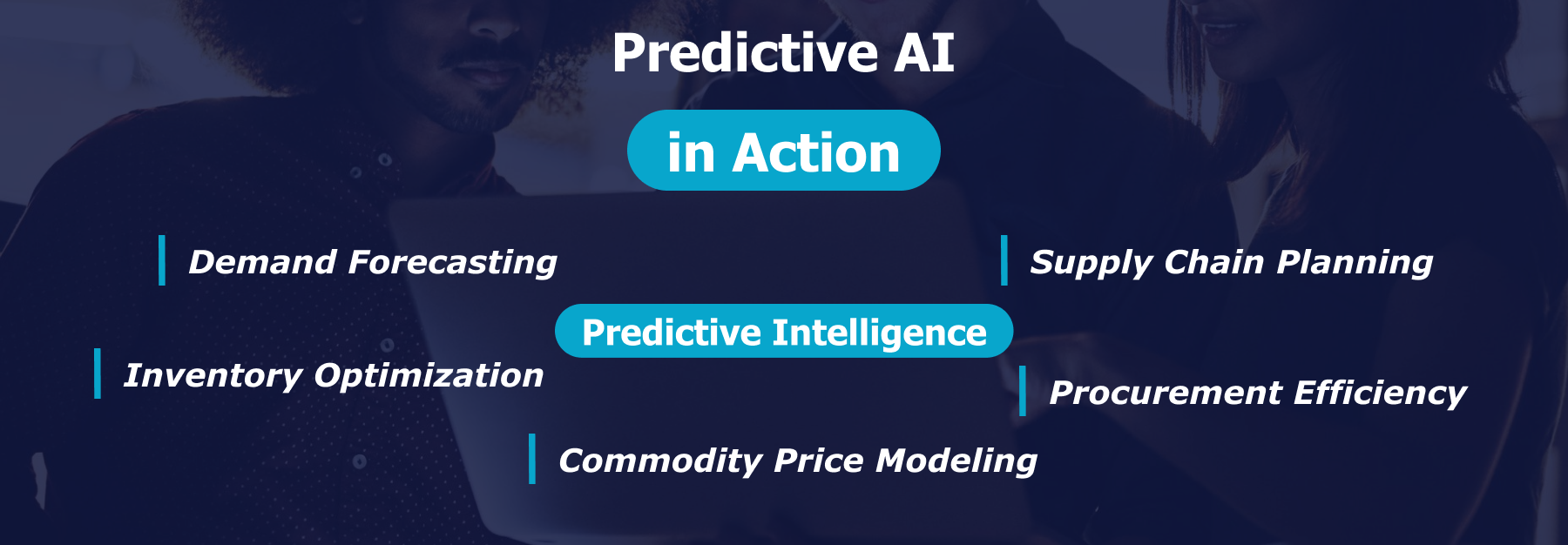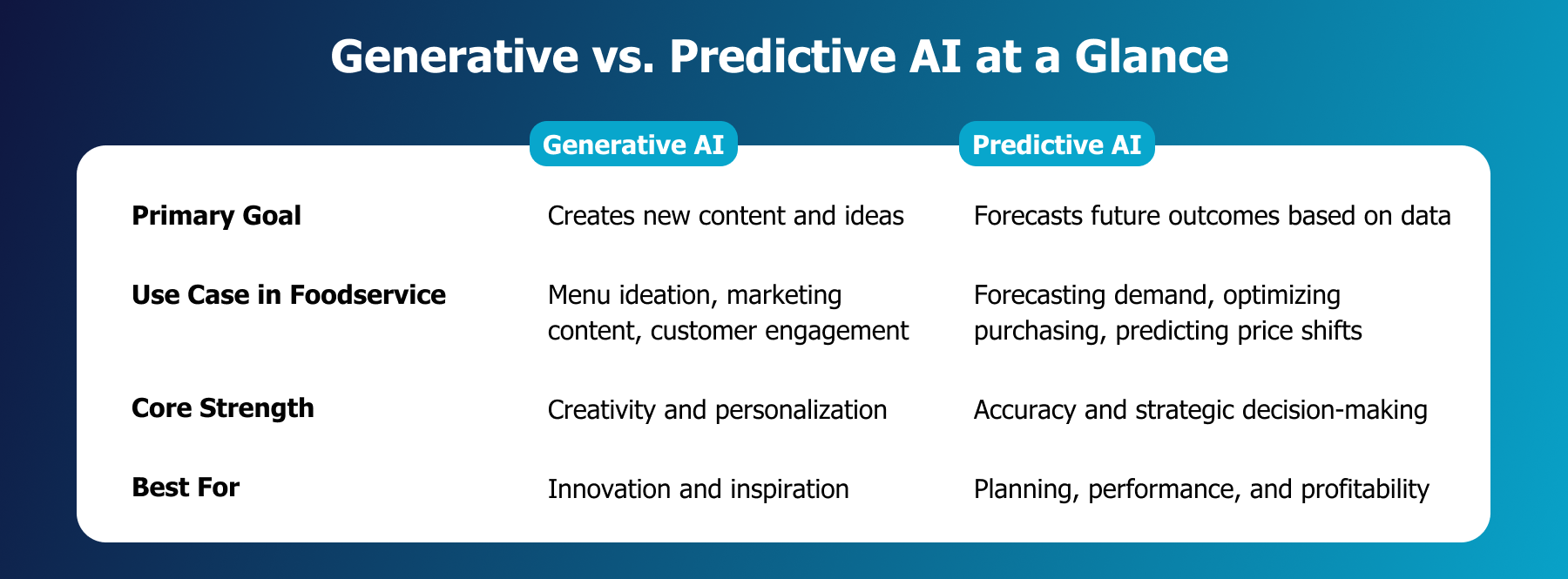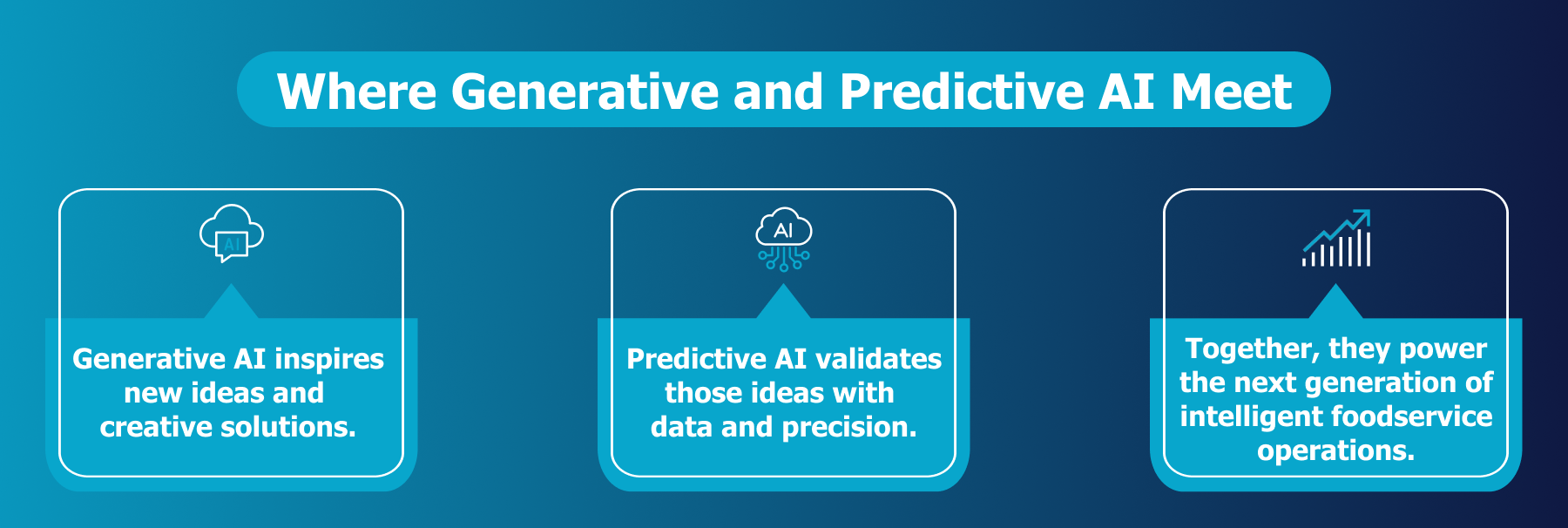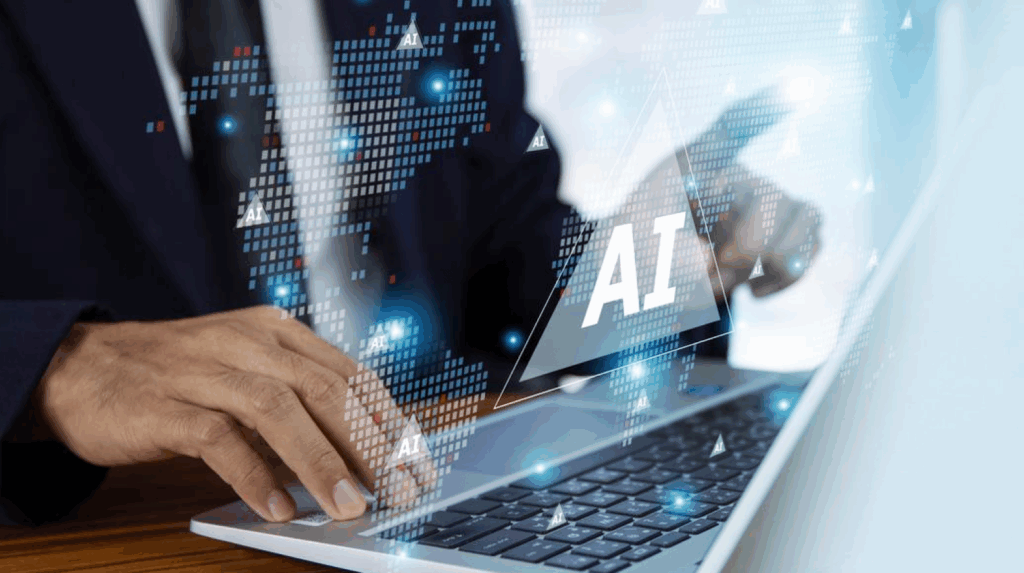How is AI in the foodservice industry changing the way operators think, plan, and make decisions every day?
Artificial intelligence is everywhere in the news, but in foodservice, the real story is how it’s being used behind the scenes. Many people hear “AI” and think of tools that write, chat, or draw. That’s part of it, but not the full picture. In the food industry, AI is helping operators make smarter decisions about what to buy, how much to order, and when to act. To really understand the impact, it helps to know the difference between generative AI and predictive AI — two powerful technologies that serve very different purposes.
What is Generative AI?
The goal of generative AI is to make something new. It learns from big data sets like text, pictures, or even recipes and uses that knowledge to come up with new ideas or content. Think of it as a creative helper that can come up with ideas, make suggestions, or make things your own. It’s very helpful when you need to be quick, have a lot of options, or get ideas.
Generative AI Applications in the Foodservice Industry
The foodservice industry is already trying out generative AI in some interesting ways:
- Menu development: Operators are trying out new flavor combinations or changing recipes to fit certain dietary needs when they make menus.
- Customer experience: Chatbots can help guests navigate menus, suggest meals, or help them make changes to their orders.
- Marketing content: AI can help with social media posts, images, or ads to save time and money.
- Product innovation: Manufacturers can use product innovation to come up with new ideas for products or find cheaper ingredients that taste good.
While generative AI can inspire new ideas, it’s important to remember that it doesn’t always rely on live market data. The results can sound convincing, but they aren’t always accurate.
What is Predictive AI?
Predictive AI looks at patterns and makes accurate predictions. It doesn’t make new content; instead, it looks at old data and current trends to guess what might happen next. It is based on logic, statistics, and facts, which makes it great for making decisions in industries that change quickly, like food service.

Predictive AI Applications in the Foodservice Industry
Predictive AI has already had a big impact on the operations of restaurants and the supply chain:
- Demand forecasting: Estimating sales volume by season, location, or even day of the week.
- Inventory optimization: Helping teams buy the right amount of goods and cut down on waste.
- Commodity price modeling: Using real market data to forecast price changes for proteins, produce, and other key items.
- Supply chain planning: Anticipating disruptions and adjusting purchasing timelines before issues arise.
- Procurement efficiency: Identifying areas where operators could save money or get better deals.
ArrowStream has been using predictive AI for years to help multi-unit and franchise restaurant operators turn raw data into actionable insights. It gives leaders the confidence to plan ahead instead of reacting to problems.
What Predictive AI Can Do for Foodservice Businesses
Predictive AI helps operators make better choices by giving them more information. It helps them:
- Stay up to date on changes in the market
- Stop wasting food and buying too much of it
- Use up-to-date information to make your negotiations with suppliers stronger.
- Make sure that buying and real demand are more in sync
It’s the kind of smart technology that keeps things running smoothly, even when the market is all over the place.
Generative AI vs. Predictive AI: Key Differences
At their core, generative AI and predictive AI are different, and each has its own strengths. Generative AI is like a brainstorming partner that helps you come up with new ideas, like a new menu for a restaurant. The main goal is to get people to think outside the box. Predictive AI, on the other hand, is the planner that makes things happen. It uses math and data to figure out if that menu will make money. It also tells you how much of each ingredient you need to use so you don’t waste any. Putting the two together gives you the best of both worlds: a burst of creativity and smart, data-driven decisions.

Why AI is Important for Leaders in the Foodservice Industry
AI is no longer just a buzzword. It’s changing how restaurants plan for demand, keep costs down, and deal with waste. Leaders can get big benefits from knowing how these systems work. People who adopt AI early get clearer insights, bigger margins, and the ability to act faster when the market changes.
Key Challenges in Adopting AI in the Food Industry
Adopting AI does come with challenges. A lot of operators have trouble with data that isn’t complete or doesn’t match up, which can make things less accurate. Some have trouble adding AI to their current systems or teaching their employees to trust the technology. Of course, being open is important. People want to know how AI makes its suggestions. The good news is that modern technology like ArrowStream is designed to make these tools easy to understand and use, so teams can focus on getting results instead of how hard they are to use.
The Future of Generative and Predictive AI in the Foodservice Industry
The future of AI in foodservice lies in combining both approaches. Picture a system that helps you come up with a new dish and then immediately tells you how well it will sell, what ingredients you will need, and how it might affect the cost or supply. That’s where things are going.
Predictive AI will still be the main tool for making decisions, helping operators buy better, predict better, and adjust to changes in demand. Generative AI will keep getting more important for creativity, content, and getting people involved. They are working together to help foodservice businesses be more flexible, knowledgeable, and sure of themselves than ever before.

Moving Forward with Confidence
Understanding the difference between generative and predictive AI helps foodservice leaders see beyond the buzz and focus on what truly drives results. Generative AI makes new ideas real, and predictive AI makes sure those ideas are based on data that is correct and can be used. Together, they help operators stay competitive, make smarter decisions, and build more resilient businesses in a constantly changing market.
ArrowStream technology uses predictive intelligence to help restaurant operators better predict, plan, and manage the performance of their supply chains. With the addition of generative AI capabilities, those insights are becoming even more intuitive and user-friendly. They turn complicated data into useful advice that teams can easily understand and act on.
Here’s how that combination strengthens your strategy:
- Predictive AI powers smarter decision-making by analyzing patterns, forecasting demand, and modeling pricing trends.
- Generative AI enhances how you experience those insights, providing clear summaries and actionable recommendations.
- Together, they give operators a complete view of their supply chain and the confidence to plan ahead.
ArrowStream continues to lead this innovation, giving restaurants the clarity and visibility they need to make every decision count. If you’re ready to explore how predictive and generative AI can strengthen your strategy, click here to connect with ArrowStream to see how data-driven intelligence can move your business forward.
